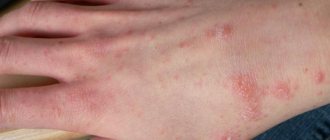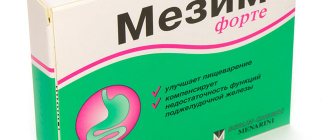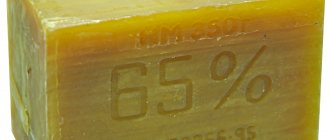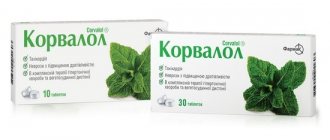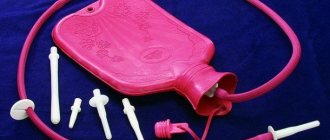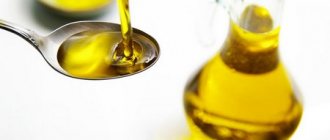A siphon enema is usually performed in a medical facility.
It is used when there is no effect from cleansing, laxative enemas and taking laxatives. Such an enema should be prescribed by the attending physician after a thorough examination and interview of the patient. It is especially important to perform a siphon enema according to the algorithm, since this procedure can lead to complications if the placement technique is violated.
Siphon enema, technique of execution.
Siphon enema. Raising the funnel above the level of the patient's body.
Notes . The intestinal tube is made of dense rubber at the end, which is inserted into the intestine, and has a central and several side holes. A siphon enema is a difficult manipulation for the patient, so it is necessary to carefully monitor his condition during the procedure. The presence of a doctor during a siphon enema is mandatory.
Setting up a siphon enema. Target . Freeing the intestines from feces and gases. Indications for siphon enema : lack of effect from a cleansing enema; removal from the intestines of products of increased fermentation, putrefaction, mucus, poisons that enter through the mouth, and toxic substances released from the body through the intestinal wall; suspicion of intestinal obstruction (the absence of gas bubbles in the washing water confirms the suspicion). Contraindications . Intestinal bleeding; intestinal perforation; intestinal injuries. Equipment . Oilcloth; a system consisting of a thick rubber intestinal tube connected through a control glass tube to another rubber tube, 1 m long (a funnel with a capacity of 1 liter is placed on the free end of the rubber tube); boiled water (+38 °C) 10 l, i.e. bucket; pelvis; oilcloth apron; latex gloves; bucket with a volume of I l; a container marked “For enema tips” with a 3% chloramine solution.
Technique for performing a siphon enema procedure
For siphon washing you will need:
- a sterilized enema system, which includes a gastric tube connected through a glass tube to a rubber one;
- petrolatum;
- funnel with a volume of 1–1.5 liters;
- tray;
- sterile gloves, oilcloth apron;
- rinsing solution with a volume of 10 to 12 liters;
- empty basin/bucket;
- ladle/jug with a capacity of 1–2 liters;
- large oilcloth.
The algorithm for performing a siphon enema includes the preparatory stage :
- Preparation of cleaning liquid. For rinsing, a weak solution of sodium bicarbonate or boiled chilled water is suitable. The temperature is selected by the attending physician depending on the indications for the procedure; usually it is in the range of 32–37ºС. The amount of solution, as a rule, is no more than 12 liters.
- Establishing contact with the person who will receive the enema. This is important so that performing rinses does not cause psychological discomfort, but as a result of tension in the intestinal muscles.
- The nurse or doctor who will carry out the cleansing will wear protective equipment: gloves, aprons.
We recommend reading: Heartburn in the morning on an empty stomach: causes and treatment
Technique for performing a siphon enema:
- Place the patient on his left side to achieve the maximum anatomical location of the intestine. Both legs are bent at the knees and tucked slightly towards the stomach.
- An oilcloth covered with a diaper should be placed under the buttocks. The lining is positioned so that one end is immersed in a basin located on the floor.
- The tip of the probe (30–40 cm) is lubricated with petroleum jelly and inserted into the colon 40 cm deep, after spreading the buttocks with the left hand to access the anus.
- Take a funnel that is connected to the probe, set it slightly inclined in relation to the patient’s buttocks and fill it with 1 liter of liquid using a ladle.
- The funnel should be held so that the liquid always remains at its mouth to prevent air from entering the intestines.
- Lower the filling hole below the patient's position to start the process of pouring the intestinal contents into the basin.
- Raise the funnel again to a height of 1 meter from the patient and pour in the solution, then lower it lower to the pelvis.
- The procedure is repeated until clear fluid returns from the intestines. After the last rinsing, the tube, without the funnel, is left in the intestine for 15-20 minutes so that the remaining solution comes out.
- After washing, the tip is very slowly and carefully removed from the intestine, the anus is cleaned and cream is applied to avoid irritation.
Preparation for the procedure
Siphon enema, due to the complexity of the technique, can only be performed by trained personnel. Usually it is performed by 2 nurses in the presence of a doctor or a doctor and a nurse. The presence of a doctor is necessary, since situations when such an enema is performed are most often urgent in themselves, and it has not only therapeutic, but also diagnostic value.
petrolatum
large oilcloth
funnel
Equipment for siphon enema (reusable instruments must be sterilized):
- rubber or soft plastic tube with a clamp;
- a large-volume funnel, it is attached to one end of the tube;
- boiled and cooled water - about 15 liters, temperature - 34–37 ° C (it cannot be higher so that the liquid is not absorbed, and colder water can cause spasms and pain);
- petroleum jelly to lubricate the tube before insertion;
- large oilcloth;
- basin, separate graduated containers for clean water and rinsing water;
- clothing for personnel (oilcloth apron and sleeves, gloves, mask, goggles).
Indications and contraindications for use
There are several indications for using siphon rinses:
- Absent/insufficient effect of cleansing with other types of enemas.
- Removing toxic toxic substances found in the intestines from the body.
- Possible intestinal obstruction, accompanied by complete or partial disruption of the movement of food through the digestive tract.
- Deep cleansing of the intestines before surgery on the gastrointestinal tract.
- Providing therapeutic effects, for example, for volvulus of the long intestine.
An enema cannot be performed if you have at least one of the following diseases:
- acute inflammatory processes in the anal area;
- advanced forms of hemorrhoids, accompanied by bleeding and large enlargement of nodes;
- tumors or prolapse of the rectum;
- diseases of the stomach or intestines that cause bleeding;
- peritonitis;
- postoperative period in the peritoneal area during the first 2-3 days.
If there are no contraindications, the use of such an enema is permitted, but only in consultation with the attending physician.
A siphon enema is a type of cleansing procedure that is recommended to be used under the mandatory supervision of medical personnel.
The effectiveness of its use is much higher than cleansing the intestines using an Esmarch mug, but only with full compliance with the procedure algorithm.
The main purpose of using siphon cleansing is the removal of feces and gases from the high parts of the intestine.
Cases of using this type of enema
Siphon enemas are prescribed for the treatment of various types of poisoning, with mechanical and dynamic intestinal obstruction (in the first situation, preparation before surgery), with ineffective cleansing of enemas, food intoxication and metabolic disorders. They are used for the analysis and diagnosis of intestinal obstruction. The use of the product if mesenteric vascular embolism or thrombosis is suspected is under no circumstances permitted.
Siphon enema: algorithm for setting and solutions used
To cleanse the colon, a siphon enema is performed. The algorithm of actions during the manipulation includes preparing the patient, the solution and the rinsing itself. The procedure is performed in a hospital setting by medical personnel to minimize the risk of complications.
Different from other enemas, the procedure is unsafe. When fluid is introduced, its circulating volume increases. Along with the excreted liquid, beneficial bacteria required for digestion also come out. The procedure is largely traumatic.
Can complications occur after the procedure?
The risks of side effects and complications are small, but their development should not be ruled out. Most often, they are due to the fact that medical personnel do not have sufficient qualifications to carry out this procedure.
Complications after the actions in question are:
- If douching is performed incorrectly, the water will quickly be absorbed into the tissues, causing a jump in blood pressure, malfunction of the internal organs and severe swelling of the surrounding tissues.
- There is a risk of intestinal perforation and bleeding.
Although the procedure in question is considered painful, and the technique is very complex, sometimes it cannot be avoided.
In order for a person to experience less discomfort, doctors should not use medicinal or oil preparations as a liquid for intestinal lavage.
What is needed to perform a siphon enema?
For the procedure you will need:
- medical rubber gloves, apron, robe;
- diaper, oilcloth, bucket or basin for draining wash water;
- napkins;
- a couch or suitable horizontal surface;
- thick rubber intestinal tube (1-1.5 m);
- Vaseline for lubrication;
- boiled water, jug, funnel;
- disinfectant solution.
We recommend reading: Catnip - a medicinal product, contraindications - Traditional medicine
How much water is needed for an enema?
As a rule, 10-12 liters of water are needed for one procedure, but how much water is needed for an enema may depend on the degree of intestinal blockage . For some, 3-4 washes (2 liters each) are enough, while others will need up to 8 washes.
If for cleansing enemas you take water at room temperature, then for siphon enemas you need water warmer than body temperature - about 40-42 degrees. This is explained by the fact that, given how much enema water needs to be passed through the intestines, if it is colder than body temperature, hypothermia of the internal organs may occur. But if the water is hotter, it can cause burns to the mucous membrane.
Is it possible to carry out this procedure at home?
It is strictly forbidden to carry out the procedure with a siphon enema on your own; such manipulations in inexperienced hands can become dangerous for a person. Although all the necessary tools can be purchased at any pharmacy, such an enema should only be performed by a specialist.
As a result, patients’ appearance improves, since such deep cleansing has an excellent effect on the skin, eliminating toxic accumulations, swelling and acne.
A siphon enema is performed in stages. Evacuation also occurs. The water is heated to a temperature of 40 degrees.
What should you consider during this procedure?
When lavage is completed, it is very important that there is no water left in the intestinal cavity, since it can be absorbed into the mucous membrane and cause water-electrolyte imbalance or intoxication. Therefore, it is imperative to take into account how much water was poured in and how much came out.
During the siphon enema, it is important to monitor the patient’s well-being. If the condition worsens, the procedure must be stopped immediately. In addition, siphon washing should be stopped when the slightest symptoms of blood impurities appear in the excreted waters, if there is no effectiveness or if painful unpleasant discomfort occurs in the abdominal area.
Siphon enema is very dangerous, so this procedure can only be performed by a doctor.
Features of siphon enema
Many experts consider the procedure to be an outdated method of colon cleansing. Despite its effectiveness, siphon enema is more traumatic than other types of enemas.
The procedure is only performed in a hospital if other cleansing methods, such as laxatives or enemas, are ineffective.
First, the doctor conducts a survey and examination of the patient, and after that the procedure is performed according to a clear scheme. Any deviation from the established technology is fraught with complications. Flushing allows you to cleanse the entire colon area. During the procedure, water is poured in and out forcibly, cleansing the lower intestine.
Procedure algorithm
Algorithm for performing the procedure:
- The tube is inserted into the intestine. It is necessary to control its location with your fingers.
- After installing the system, liquid is poured into the funnel and raised above the patient’s body. In accordance with the rule of communicating vessels, water must go into the intestines.
- The funnel descends below the body, which should lead to fluid flowing back along with feces and gas bubbles.
- After cleaning the funnel, a new portion is introduced into the intestine. The entire procedure can include up to ten washes.
The rubber tube remains in the intestine for some time to allow the remaining solution to escape. After the procedure is completed, all used items are boiled and sterilized.
What is important when performing the procedure
For regular enemas, liquid at room temperature is used. Siphon water requires warmer water, at least 40 degrees.
Cold water can cause hypothermia of internal organs, and hot water can cause thermal burns of the mucous membrane. All manipulations must be slow and careful so as not to cause damage or pain or provoke bleeding.
I had to go through this procedure. The sensations are certainly not pleasant, but tolerable, the main thing is that the manipulations are carried out by an experienced doctor.
Let's work together to make the unique material even better, and after reading it, we ask you to repost it on a social network convenient for you. net.

